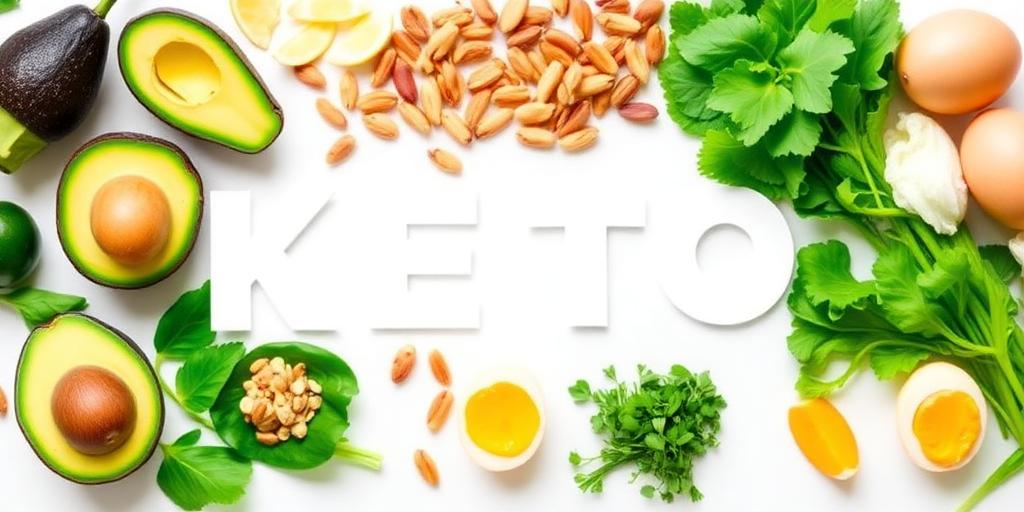The ketogenic diet, commonly known as the keto diet, is a high-fat, moderate-protein, and very low-carbohydrate diet. It's designed to shift the body's primary fuel source from glucose (derived from carbohydrates) to ketones (produced from fat). This metabolic state, known as ketosis, is achieved by drastically reducing carbohydrate intake and replacing it with fat.
How the Keto Diet Works
When you consume a high amount of carbohydrates, your body converts them into glucose, which is then used as the primary energy source. Excess glucose is stored as glycogen in the liver and muscles. When carbohydrate intake is severely restricted, glycogen stores deplete. As a result, the body starts breaking down fat into fatty acids, which are then converted into ketones in the liver. These ketones become the alternative fuel source for the brain, heart, and muscles.
Pros of the Keto Diet
- Weight Loss:
- The keto diet can be effective for weight loss because it helps reduce hunger and increase satiety due to the high fat and protein intake. Additionally, the body burns fat for fuel, leading to a reduction in body fat mass.
- Blood Sugar Control:
- By limiting carbohydrate intake, the keto diet can help stabilize blood sugar levels. This is particularly beneficial for individuals with type 2 diabetes or insulin resistance.
- Improved Cholesterol Levels:
- The keto diet has been shown to improve cholesterol levels by increasing HDL (good) cholesterol and decreasing LDL (bad) cholesterol and triglycerides in some individuals.
- Epilepsy Management:
- The keto diet was originally developed to treat epilepsy in children. It can reduce the frequency and severity of seizures in some individuals.
- Brain Health:
- Ketones have neuroprotective effects and may benefit individuals with neurodegenerative diseases like Alzheimer's and Parkinson's. Research is ongoing in this area.
Cons of the Keto Diet
- Keto Flu:
- During the initial transition into ketosis, many people experience symptoms like fatigue, headache, nausea, and irritability, collectively known as the keto flu. These symptoms are usually temporary and can be mitigated by staying hydrated and consuming electrolytes.
- Nutrient Deficiencies:
- The keto diet can be restrictive and may lead to nutrient deficiencies if not properly planned. It's important to consume a variety of nutrient-dense, keto-friendly foods and consider supplementation if necessary.
- Digestive Issues:
- The low fiber content of the keto diet can cause constipation and other digestive issues. Eating plenty of non-starchy vegetables and considering a fiber supplement can help alleviate these problems.
- Kidney Problems:
- The keto diet may increase the risk of kidney stones in some individuals. It's important to stay hydrated and monitor kidney function while following the diet.
- Sustainability:
- The keto diet can be challenging to maintain long-term due to its restrictive nature. Many people find it difficult to adhere to the diet's strict guidelines over an extended period.
How to Follow the Keto Diet
- Calculate Macronutrient Ratios:
- A typical keto diet consists of 70-80% of calories from fat, 20-25% from protein, and 5-10% from carbohydrates. Use a keto calculator to determine the appropriate macronutrient ratios for your individual needs.
- Choose Keto-Friendly Foods:
- Focus on consuming foods high in healthy fats, such as avocados, nuts, seeds, olive oil, and fatty fish. Include moderate amounts of protein from sources like meat, poultry, and eggs. Limit carbohydrate intake to less than 50 grams per day, primarily from non-starchy vegetables like leafy greens, broccoli, and cauliflower.
- Monitor Ketone Levels:
- Use ketone test strips or a blood ketone meter to monitor your ketone levels and ensure you are in ketosis. Aim for ketone levels between 0.5 and 3.0 mmol/L.
- Stay Hydrated and Replenish Electrolytes:
- Drink plenty of water and consume electrolytes like sodium, potassium, and magnesium to prevent dehydration and electrolyte imbalances. Consider adding salt to your meals or taking an electrolyte supplement.
- Plan Your Meals:
- Plan your meals in advance to ensure you are meeting your macronutrient goals and consuming a variety of nutrient-dense foods. This will help you stay on track and avoid common pitfalls like nutrient deficiencies and cravings.
Conclusion
The keto diet can offer several benefits, including weight loss, improved blood sugar control, and potential benefits for brain health. However, it also has potential drawbacks, such as the keto flu, nutrient deficiencies, and digestive issues. It's important to carefully consider the pros and cons of the keto diet and consult with a healthcare professional or registered dietitian before starting it. If you decide to try the keto diet, be sure to follow it safely and sustainably by planning your meals, monitoring your ketone levels, and staying hydrated and replenishing electrolytes.









